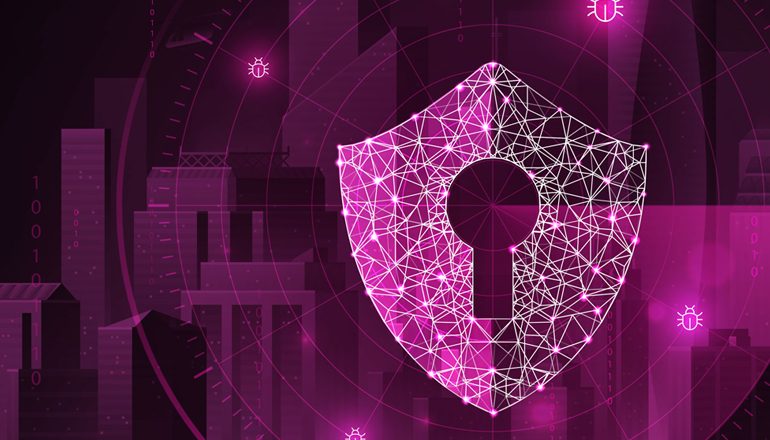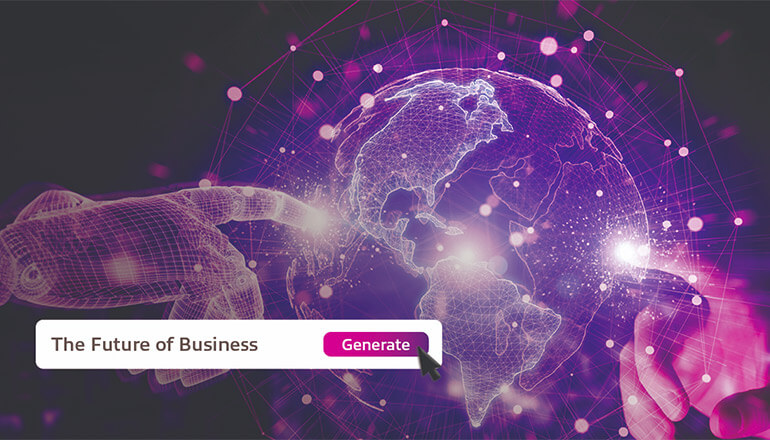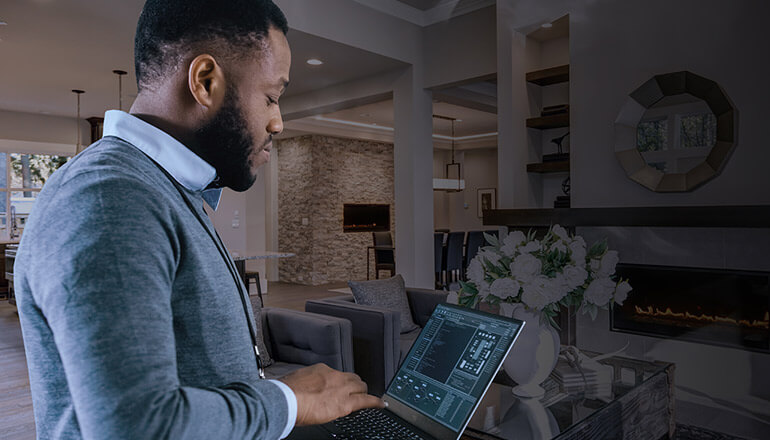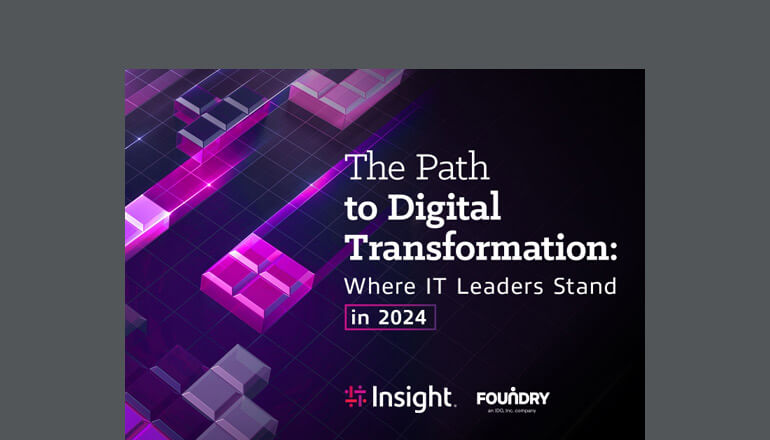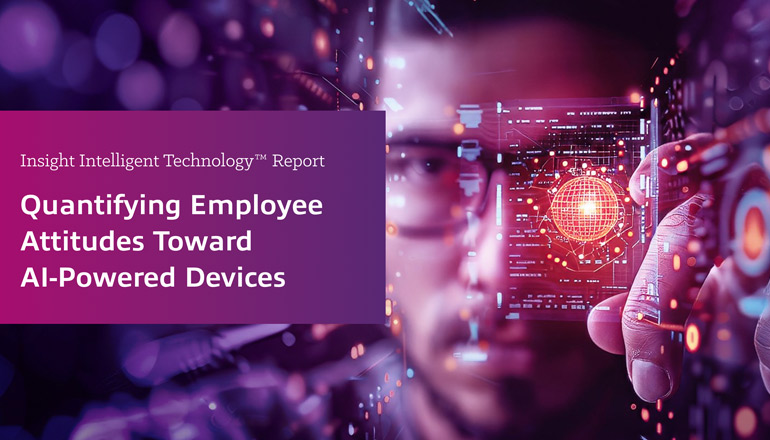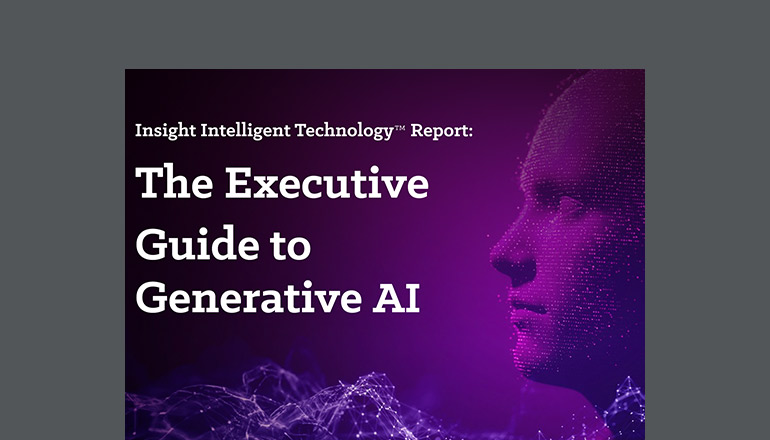Tech Journal Top 4 Device Priorities for IT Leaders in 2022
Discover the IT trends that will shape the future of endpoint management and influence device priorities in 2022.
By Tech Journal / 21 Jun 2022 / Topics: IT optimization Featured Endpoint management

The proliferation of remote work in 2020 sent mobile device numbers soaring. And the trend won’t be slowing down any time soon. In fact, the number of mobile devices worldwide is expected to reach nearly 16 billion in 2022 and increase to over 18 billion by 2025.1
Our dependence on mobile devices will continue to grow in the coming years as edge technologies, Internet of Things (IoT) and 6G networking innovations change the way we do business. The devices you select today — and how you choose to manage them — will shape the success or failure of your business going forward.
With that caveat firmly in mind, let’s explore the top four device priorities you should consider when it comes to device procurement and management this year.
#1. Secure endpoints anywhere.
Security is the leading priority for most organisations these days — and for good reason.
43%
of surveyed companies suffered a cyberattack in 2020. 2
Ransomware attacks increased by 150% in 2020. 3
Ransomware victims paid out 300% more to cybercriminals in 2020. 3
Now that corporate devices and company data are leveraged outside the physical borders of the office, security has become much more complex. As Joe Flynn, director of technical architecture at Insight, explains:
“The old way of enforcing security doesn’t work when the office isn’t the central hub anymore. A dispersed workforce means every employee’s home, and every personal device accessing company data, is a new office in need of security.”
So, what can you do to create security borders around a borderless workforce? We recommend deploying cloud-ready devices tied to a modern endpoint management platform. Modern endpoint management enables you to “protect at the door,” which means three things:
- Secure at the user level with protections such as Multi-Factor Authentication (MFA), Single Sign-On (SSO) and behavioral analysis.
- Secure at the content level with protections such as data classification, asset tagging and access management.
- Secure at the device level with protections such as encryption, update management and endpoint governance.
Your people play a critical role.
When it comes to endpoint security, your people are your both your weakness and your secret weapon. According to the 2021 Hiscox Cyber Readiness Report, 65% of ransomware attacks are initiated by a phishing email.2
No matter how tight your security is, it won’t do much good if an employee inadvertently opens the back door by clicking a malicious link. That’s why it’s essential to train your workforce to recognise and report suspicious emails, fostering a culture of security.

“ You want security tools that enable the level of security you’re comfortable with, but also give your workers a flexible and simple experience, where they can be productive anywhere.
— Joe Flynn, Director of Technical Architecture, Insight
Security and employee experience: a balancing act
While the importance of security can’t be overstated, there is such a thing as too much security. According to Forrester, “Many companies inadvertently make it as difficult as possible for employees to access enterprise data for security reasons.”4
Locking down your systems and data may sound like a good idea, but not if it limits employee productivity. The trick is to land on a security posture that’s strong enough for your needs without being a hindrance to your workforce.
#2. Improve employee experience.
The advent of the pandemic and the growth of remote work has led many workers to reassess where they put their time and energy.
Employees are no longer content to simply put in their time at a company and hope for a good return. They’re looking for fulfilling work experiences with healthy work-life balance and great benefits — and they’re willing to leave their current employers to get it.
This is The Great Resignation and it’s affecting organisations everywhere.
41%
Of the global workforce will consider quitting their jobs within the next year 5
11K+
The average cost of a single resignation is $11,372. 6
75%
of executives say The Great Resignation has affected their financial stability. 6
What can IT leaders do to help offset the trend and improve employee retention? Start by examining your employee experience. It’s true that pay and benefits play a big role in talent attraction, but, when it comes to retention, employee experience is king.
According to a study by The Predictive Index, “Companies that prioritise the employee experience—whether through benefits, flexibility, inclusion, or a sense of purpose—see clear reductions in turnover compared to their peers.” 6

“ Talent has high expectations with today’s technology, and there are so many options available to deliver a great experience without compromising security or productivity.
— Adam Duffy, Services Product Manager, Insight
Your technology matters.
Technology can make or break your employee experience. If employees can easily access everything they need to get their job done anywhere, that’s a good technology experience. If tech is slow, unreliable or difficult to access, the only thing employees will experience is frustration.
Since consumer technology delivers such a great customer experience, employees expect the same from their workplace technology. Anything less is simply unacceptable.
62%
of employees say having the right device ecosystem makes them more motivated and engaged. 7
85%
of workers want their organisations to provide them with an ecosystem of tested, supported devices and accessories.
44%
of employees say they would leave an organisation with substandard technology.
According to a recent Microsoft report, 41% of the global workforce will consider resigning in the next year.8 Delivering a modern technology experience with devices employees want to use may help your organization retain more of its workforce.
#3. Optimise IT spending.
Driving down IT costs is always a priority for business leaders. However, this year, the focus isn’t so much on reducing costs as it is on optimizing spending. Gartner predicts that worldwide IT spending will actually grow 5.1% in 2022.9
While IT budgets are healthier this year, leaders will need help to prioritise projects and reallocate funds accordingly. John-David Lovelock, distinguished research vice president at Gartner, says, “2022 is the year that the future returns for the CIO … They are now in a position to move beyond the critical, short-term projects over the past two years and focus on the long term.”
For long-term projects that will yield the greatest Return on Investment (ROI), we recommend:
- Optimising the device lifecycle
- Consolidating IT vendors
- Updating legacy systems and processes
47%
of IT leaders want to improve the way they use providers to streamline hardware lifecycles. 10
47%
of enterprises are managing more than 10 vendor relationships. 11
83%
of IT leaders say it’s not easy to manage their multi-vendor environment. 11
Why optimise the device lifecycle?
Most organisations have inefficiencies in how they procure, deploy, maintain and recycle devices. By optimising your device lifecycle process, you can drastically reduce the time it takes to deploy devices and reduce your Total Cost of Ownership (TCO) as well.
Why consolidate IT vendors?
Having multiple vendors adds complexity to your environment and makes management more difficult. Plus, multi-vendor relationships are expensive to maintain. For example, many companies have multiple platforms to manage devices from multiple manufacturers. With how much it costs to maintain in-house expertise in all these areas, working with one partner who can manage all your IT needs saves money.
Why update legacy technology?
Legacy systems are often the biggest drain on IT resources. Maintaining an outdated system requires a highly specialised skillset, which can be hard to source and often comes at a high price. Legacy systems also lack modern security, leaving your organisation vulnerable to cyberattacks. Staying with legacy technology will cost you more in the long run through increased security risks and losses in productivity.

“ Legacy systems just don’t cut it — they lack security, they lack the ability to connect users and they’re incapable of giving end users the experience they need.
— Joe Flynn, Director of Technical Architecture, Insight
#4. Make way for modern management.
Many IT leaders are fully occupied by the needs and challenges of daily IT operations. But the only businesses that will thrive in the future are those that make time for modern management now.
The explosion of data and devices is just getting started. Consider these forecasts from Gartner:
3x
The number of IoT devices will triple from 2020 to 2030, growing at a compound annual growth rate of 11%. 12
50%
By 2025, more than 50% of enterprise-managed data will be created and processed outside the data centre or cloud.
25%
By 2025, 25% of edge networks will be breached, up from less than 1% in 2021.
To prepare for this rapid expansion of devices at the edge, organisations need to implement modern management solutions sooner rather than later. As the same Gartner report concludes:
“Digital transformation necessitates extending and distributing the digital enterprise to the edge — where customers and employees, and buildings and enterprise assets are located — and connecting everything and everyone digitally.”
You’re gonna need backup.
The move to modern management is unique to every organisation. Those that are agile and cloud-ready may need little help to complete the transformation, while organisations suffering from heavy technical debt may need more assistance to update legacy systems and improve processes.
In light of The Great Resignation, good talent may be hard to come by for a while. Yet, the IT department’s responsibilities continue to grow.
68%
of surveyed IT leaders said their department has taken on new responsibilities around procurement since February of 2020. 10
1/3
More than one-third of IT professionals said device procurement, deployment and management have felt “very challenging” during the pandemic. 10
82%
82% of companies needed help with talent acquisition and retention over the past 12 months. 6
Learn more about how our device lifecycle services can accelerate your journey to modern management.
Sources:
1 O’Dea, S. Forecast Number of Mobile Devices Worldwide From 2020 to 2025. Statista.
2 Hiscox. Hiscox Cyber Readiness Report 2021.
3 Sharton, B. (2021, May 20). Ransomware Attacks Are Spiking. Is Your Company Prepared? Harvard Business Review.
4 Bieler, D. and Hewitt, A. (2021, March 15). An Adaptive Mobility Strategy Sets the Technology Foundation for Anywhere Work. Forrester.
5 Mearian, L. (2022, Jan. 6). No End in Sight for The Great Resignation; Workers Keep Quitting for Better Pay, Benefits. Computerworld.
6 The Predictive Index. 2022 Report: The State of Talent Optimization.
7 Dell EMC. (2019). The Workers’ Experience Survey.
8 Microsoft. (2021, March 22). 2021 Work Trend Index: Annual Report.
9 Gartner. (2022, January 18). Gartner Forecasts Worldwide IT Spending to Grow 5.1% in 2022.
10 Insight. (2020, June 4). 2020 Insight Intelligent Technology Pulse: The Impact of COVID-19 on Business Readiness.
11 Insight. (2020). IT Vendor Consolidation: An Essential Initiative for Today’s Businesses.
12 Bittman, T. & Gill, B. (2021, October 20). Predicts 2022: The Distributed Enterprise Drives Computing to the Edge. Gartner.




